The next-gen MacBook Pro with Retina Display Review
by Anand Lal Shimpi on June 23, 2012 4:14 AM EST- Posted in
- Mac
- Apple
- MacBook Pro
- Laptops
- Notebooks
The King of All Notebook Displays
For years Apple has been shipping some of the best displays in consumer notebooks, but the MacBook Pro’s Retina Display is in a league of its own. While I never liked the phrase “painted on” in reference to the iPad and iPhone Retina Displays, that’s the best way I can describe the effect the MacBook Pro’s Retina Display has on me. Text really does look painted on. The effect is really the result of two things.
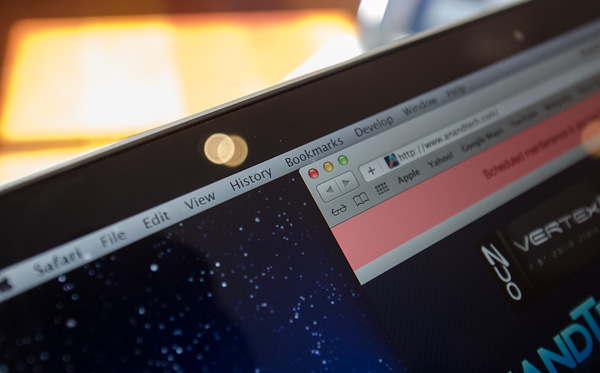
The first is Apple’s removal of its cover glass. LCD panels aren’t particularly attractive, they are ugly squares composed of two pieces of glass and a number of filters/polarizers. To hide the ugly edges, display makers wrap bezels around the display. Most people aren’t fond of bezels so next came a ton of effort to minimize bezel size. An alternative is to simply place a third piece of glass over the entire LCD assembly and make it look as if the bezel and LCD panel are integrated. This outermost layer is known as a cover glass and is what Apple uses on all of its glossy displays. If you’ve ever taken apart a Cinema/Thunderbolt Display or a newer iMac you’ll know that the cover glass is literally just a piece of glass that you have to remove with some suction cups.
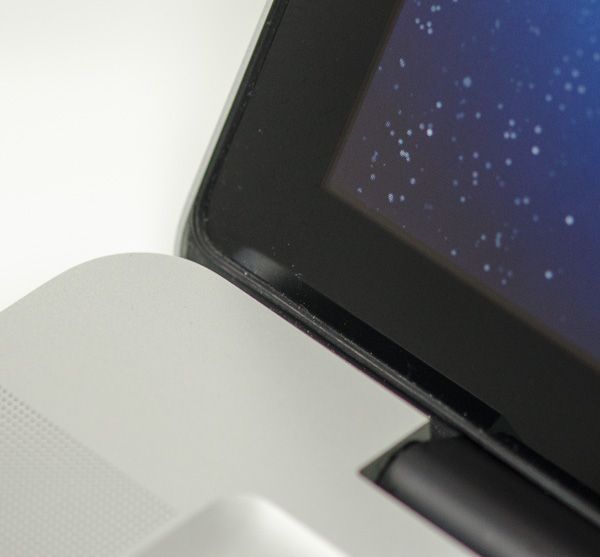
Non-Retina MacBook Pro, notice the gap between the outermost LCD glass and the cover glass
The MacBook Pro’s Retina Display does away with the cover glass and instead uses a fairly unique LCD assembly. There are still two pieces of glass but the outermost glass is actually a different size and shape - it integrates a bezel. By integrating the bezel into the outermost glass in the LCD stack you get the same effect as a cover glass but without the added reflections it introduces.
You also limit the possibility of dust getting trapped between the cover glass and the LCD. The danger is that you no longer have a protective piece of glass in front of your expensive new LCD. If you scratch the display you're scratching the LCD itself. While this has been true for conventional matte displays for a while, it's worth mentioning if you're used to Apple's glossy displays where you did have that added security layer.
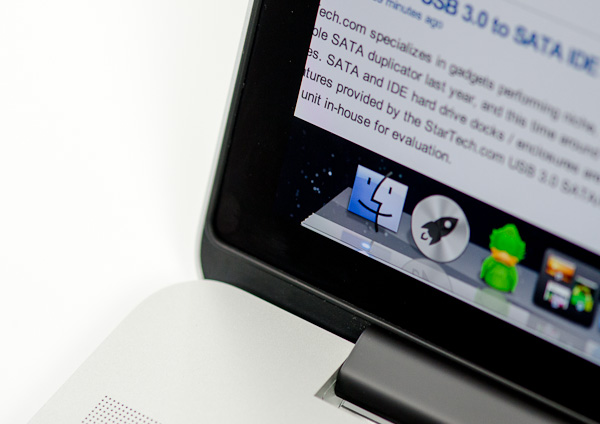
The MacBook Pro with Retina Display, no gap, no cover glass
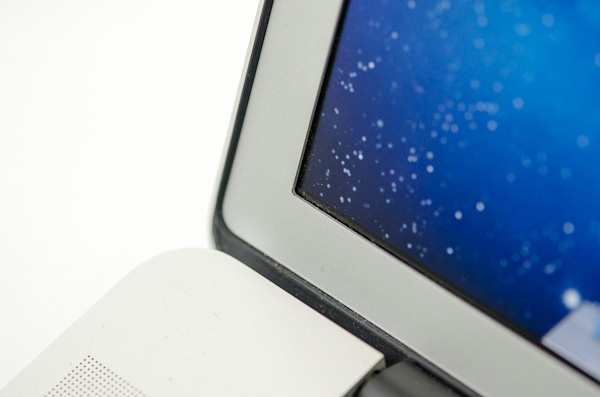
The 2011 MacBook Pro with High-Res Matte display option, no cover glass, top bezel

From left to right: 2010 High Res Glossy MBP, 2012 rMBP, 2011 High Res Matte MBP
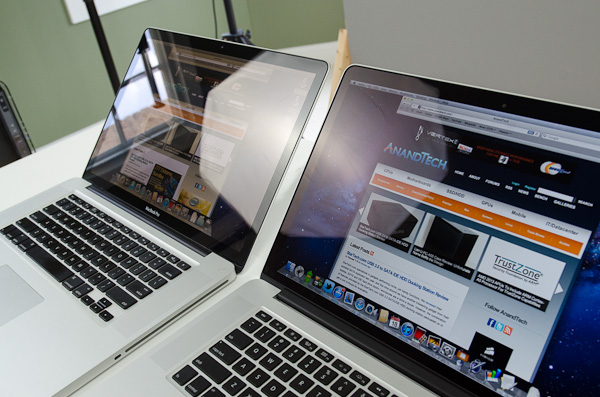
Glare handling indoors - 2011 High Res, Glossy MBP (left) vs 2012 rMBP (right)
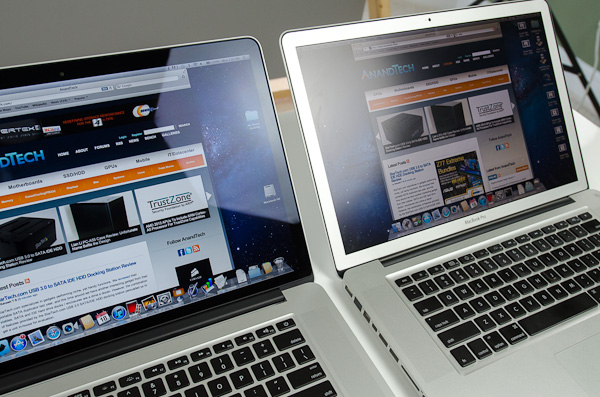
Glare handling indoors - 2012 rMBP (left) vs. 2011 High Res, Matte MBP (right)
The Retina Display is also obviously an extremely high resolution panel at 2880 x 1800. Note that this is 44.6% more pixels than Apple’s 27-inch Thunderbolt Display, and 26.6% more pixels than the 30-inch panels that we’ve loved for so long - all in a 15.4-inch notebook display.
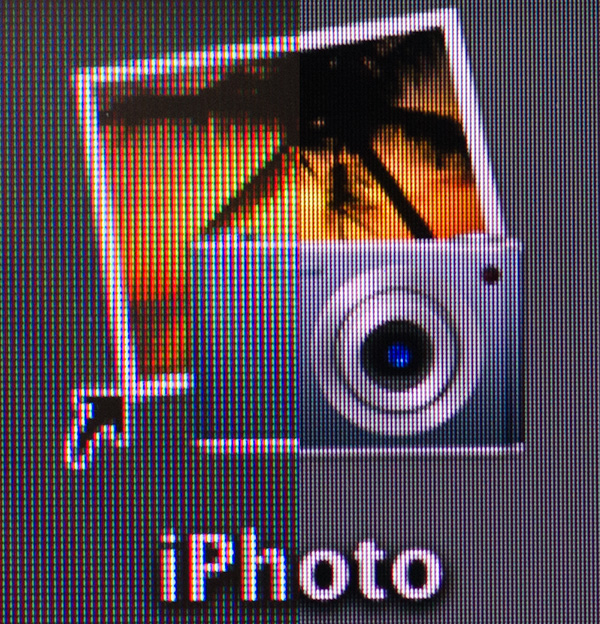
An iPhoto shortcut, High Res 2011 MBP (left) vs. Retina Display MBP (right)
At 220 pixels per inch it’s easily the highest density consumer notebook panel shipping today. At normal viewing distances and even with my face closer than I’m comfortable putting it I simply cannot discern individual pixels.
It’s the combination of these two elements, the removal of the cover glass and the insanely high pixel density that makes everything from text to UI elements just look painted on the new Retina Display. And the effect is gorgeous. I’ve never seen a prettier panel and it’s actually ruined me for pretty much all other displays, notebook and desktop.
While I can appreciate the iPad’s Retina Display, the impact from the MacBook Pro’s display is even more significant. Perhaps it’s because I still spend so much time working on a standard, non-tablet display, but I’m far more excited about this display than anything else Apple has delivered under the Retina moniker.
It’s not just pixel density that Apple has to offer here. Similar to its Retina Displays in the iPhone and iPad, the MacBook Pro’s Retina panel ditches TN in favor of IPS technology. The result is an incredible improvement in viewing angles. On a notebook I don’t spend a lot of time viewing it from far left/right angles, although I see the benefit when I’ve got others huddled around my display. Here the panel performs admirably - you lose brightness at far left/right angles but there’s no perceivable color shift. In fact, the painted on effect is even more impressive at these far left/right viewing angles.
For a single user however the more impressive characteristic is just how good the display looks at vertically off-center angles. I wrote much of the initial parts of this review while on an airplane in coach, which with a 15-inch notebook on my lap means I’m going to be looking at the display at a weird angle to begin with. The thinner rMBP doesn’t do enough to make the airplane usage model any better if the person in front of you decides to recline, but the IPS panel does make the display perfectly usable at the off-center angle you’ll inevitably have to deal with.
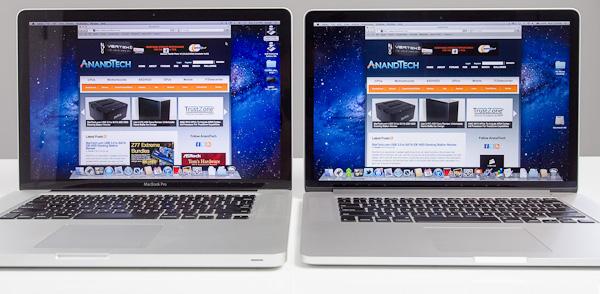
2010 High Res, Glossy MBP (left) vs. 2012 rMBP (right)
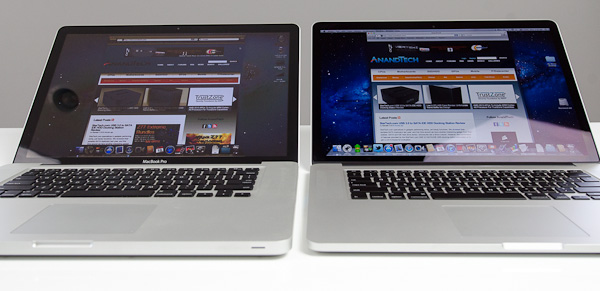
Hello colorshift!
2010 High Res, Glossy MBP (left) vs. 2012 rMBP (right)


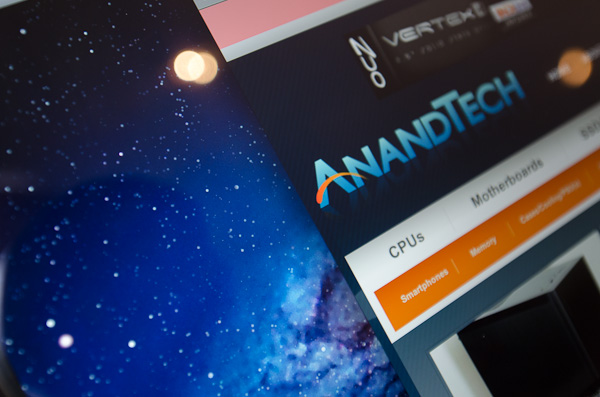
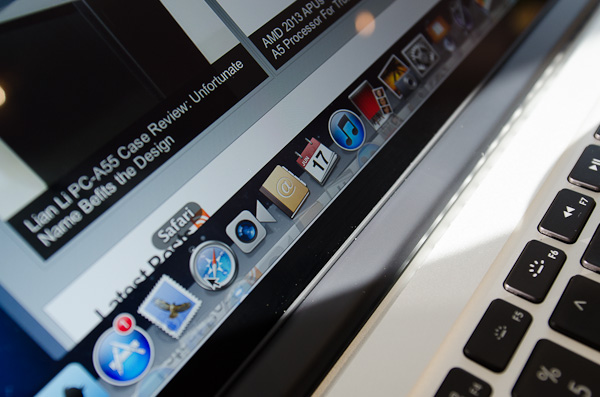
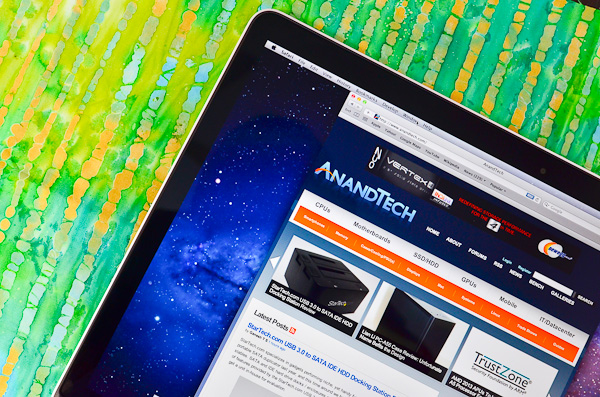
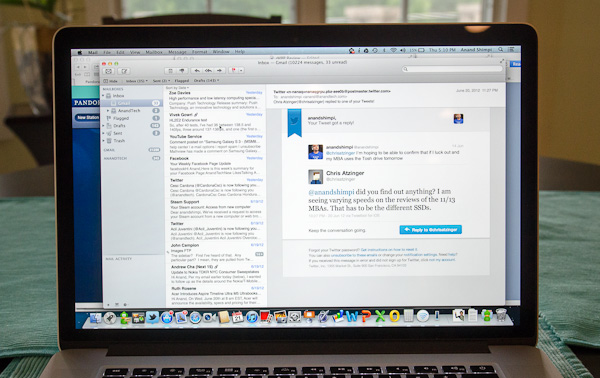
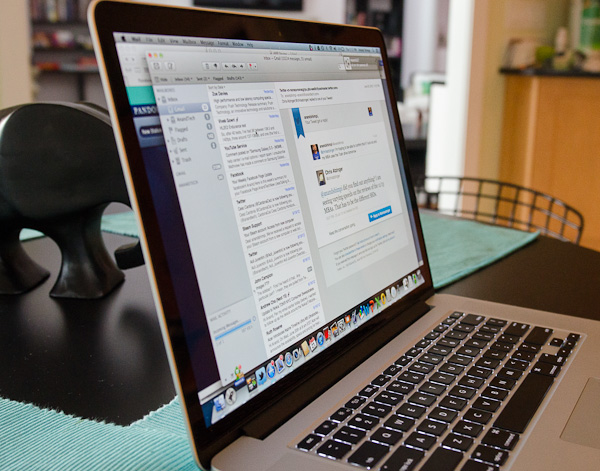








471 Comments
View All Comments
dannyboy153 - Saturday, June 23, 2012 - link
The Sony Z is more of a "consumer" laptop than a creative laptop. Here's why:1) The 1080p (9x16) LCD is great for watch movies but the loss in 1" vertical height is annoying.
2) No discrete GPU built into the Laptop.
3) No high res output. VGA and HDMI doesn't cut it. I have no idea why their dock doesn't have DVI or display port even though it's equipped with a discrete GPU. Their implementation of the dock is admirable, but it's filled with bugs. Read the reviews.
I'll have to admit the MBP is heavier by almost 2x the weight of the Sony Z. But at ~4.5 lbs, it's not overly heavy. MBP advantage:
1) None of the disadvantages of 1-3 above.
2) 15.4" screen is HUGE for me (coming form an X200). Also, it's like the best of both worlds for glossy and matte LCDs; beautiful and vastly reduced glare.
3) The Sony Z has a quad core but the MBP is more powerful. Notice I didn't mention the weaker Quad core of the Sony Z as one of its disadvantage because I believe it's hard enough for them to even offer such power in their laptop.
ananduser - Saturday, June 23, 2012 - link
The 2010 VaioZ had discrete video, 1080p screen, quad raid SSD option. blu ray, slim profile, etc.The 2012 VaioZ does not have discrete built in, only via external dock.
So...considering what the Z was for 2010, Anand never sang such high praises for it. Why ? Because he's a macuser and couldn't care less about another company's efforts.
OCedHrt - Sunday, June 24, 2012 - link
http://www.anandtech.com/show/5430/sony-vaio-z-wit...They did eventually do a review of the 2011/2012 Z, however they're not as tolerant of small faults as they are with apple products.
I remember back in the day when Anand would wipe the floor about keyboards not having enough pitch. But on the macbook pro retina the reduced pitch is just "different" not terrible.
gstrickler - Sunday, June 24, 2012 - link
The MBP keyboard doesn't have reduced pitch, it's a standard 19mm pitch. It has slightly reduced key travel.OCedHrt - Monday, June 25, 2012 - link
Sorry I meant key travel. Incorrect use of terms on my part.dannyboy153 - Sunday, June 24, 2012 - link
For 2010, there were plenty of laptops with 1080p. Name one laptop now with the Apple's display. The Z is a great laptop if you're a consumer of media. But for creators, the Apple is superior.Spunjji - Monday, June 25, 2012 - link
Name another *13"* laptop in 2010 with 1080p. Go on. We can play this game all day!SanX - Saturday, June 23, 2012 - link
hdmi can not handle 1080 output?dannyboy153 - Sunday, June 24, 2012 - link
I don't consider 1080p hi res. At a minimum it has to be at least 1200p in 10x16 format for 24" monitors. For the price of the Sony Z, not being able to do 2560x1600 is a shame.OCedHrt - Monday, June 25, 2012 - link
Reading on forums there doesn't seem to be any issues with 1920x1200 external output, but 2560x1600 does not work without a hack for reduced refresh rate.